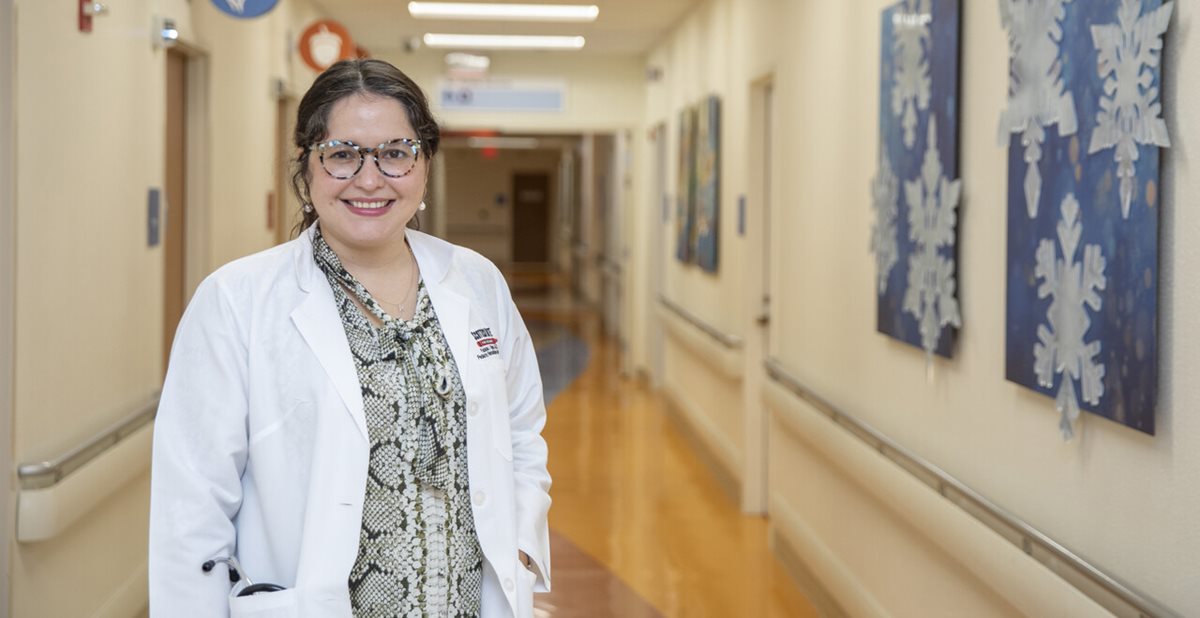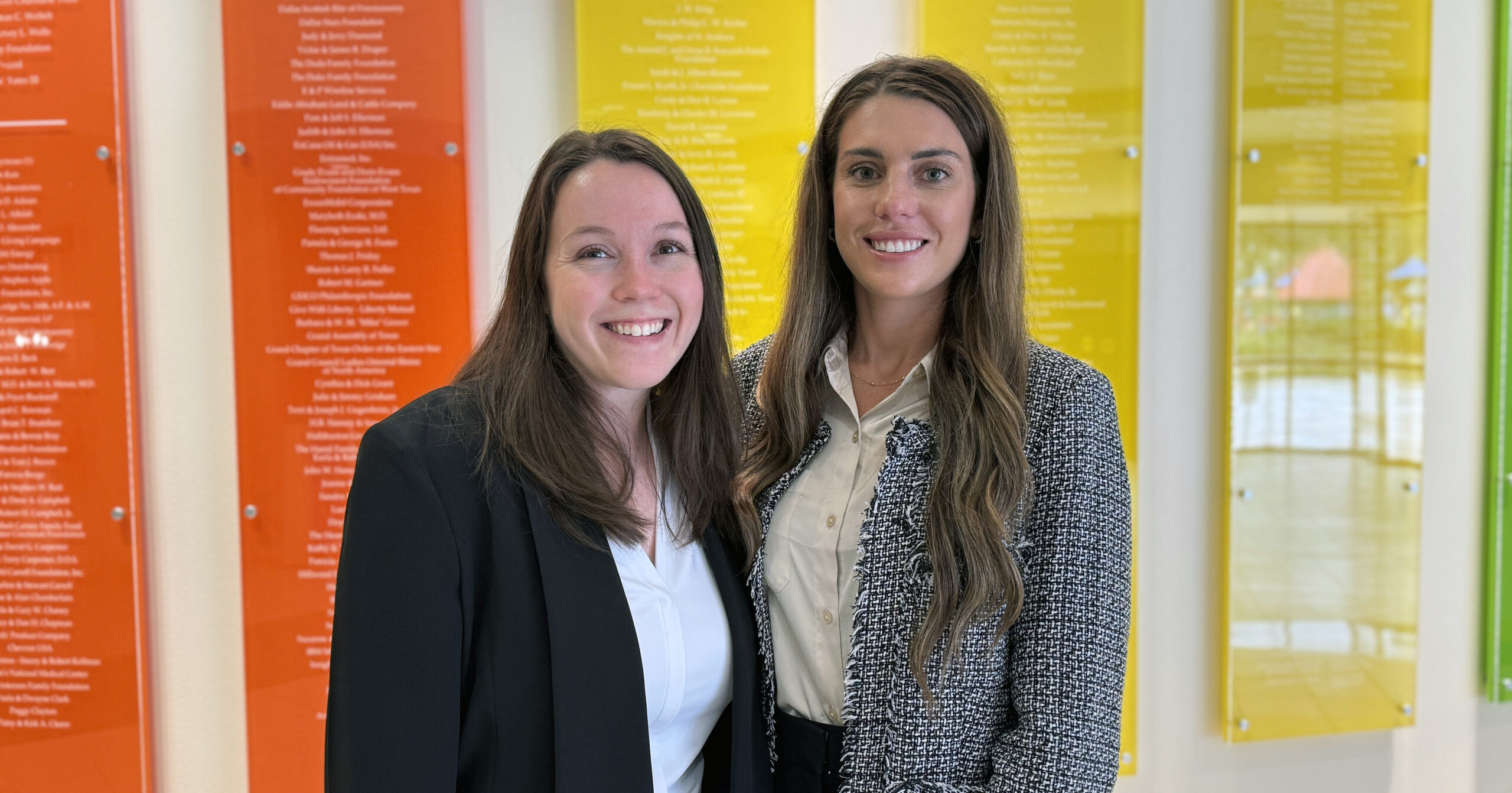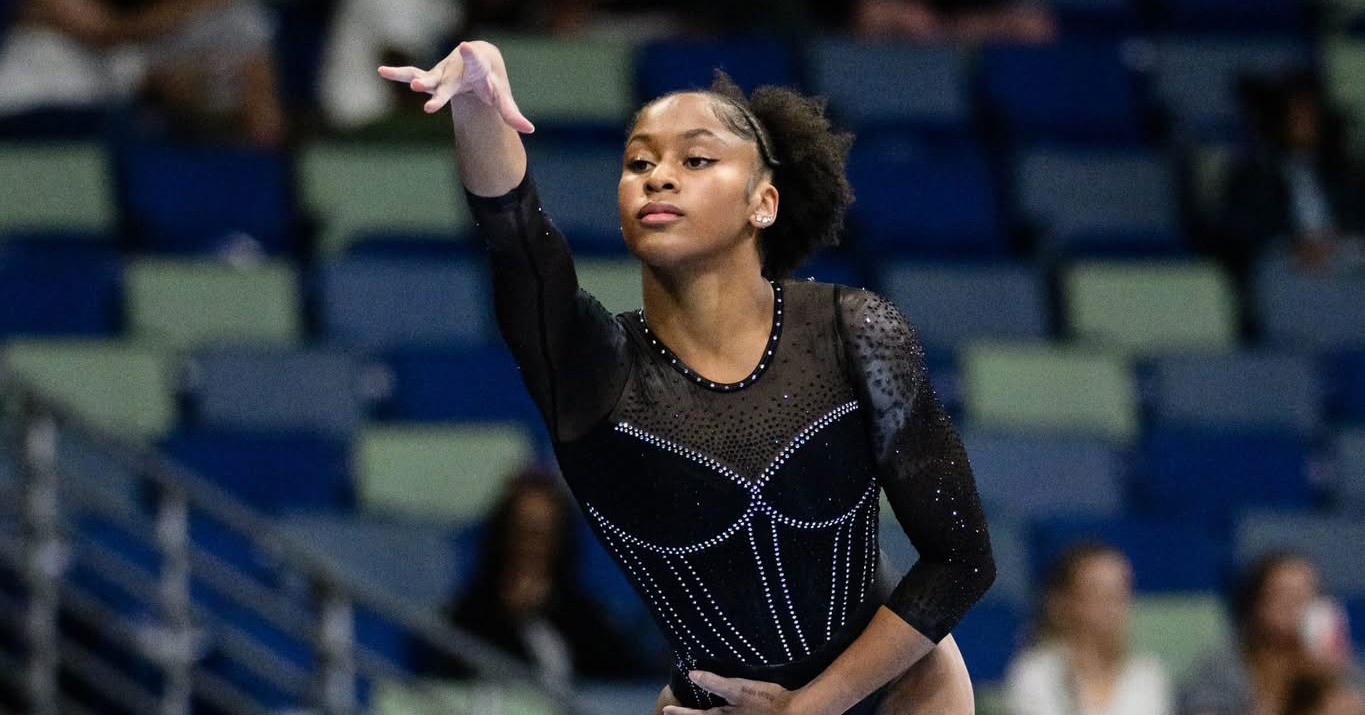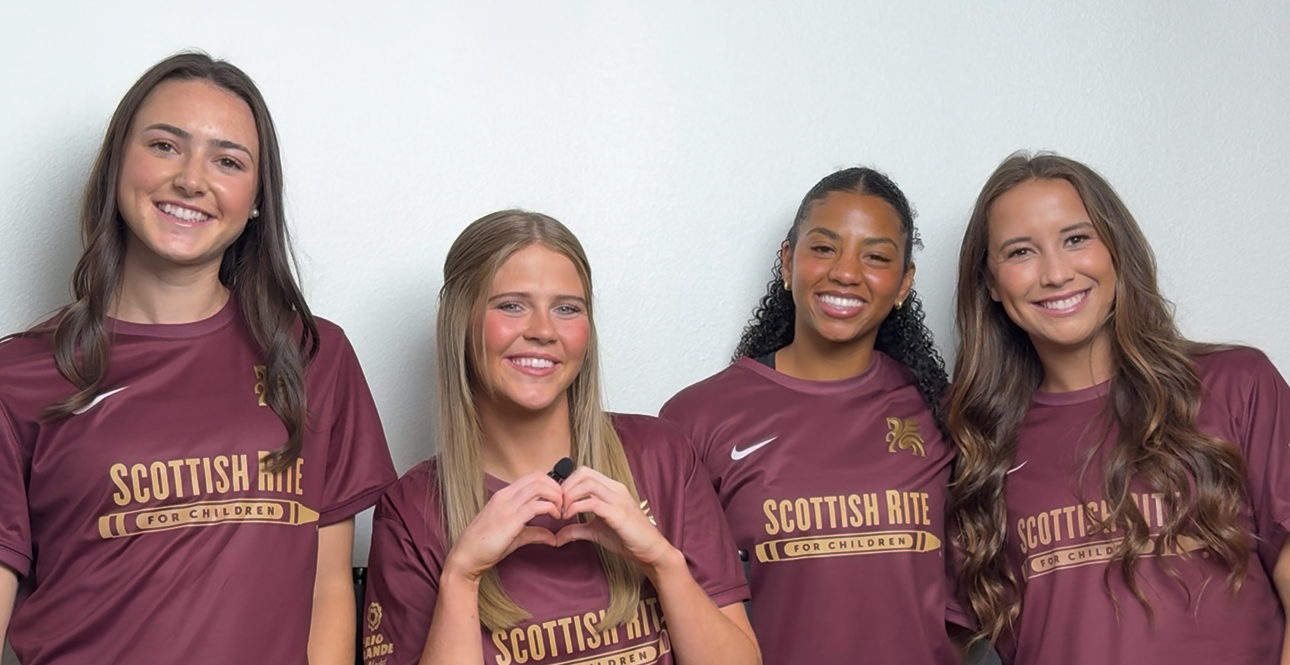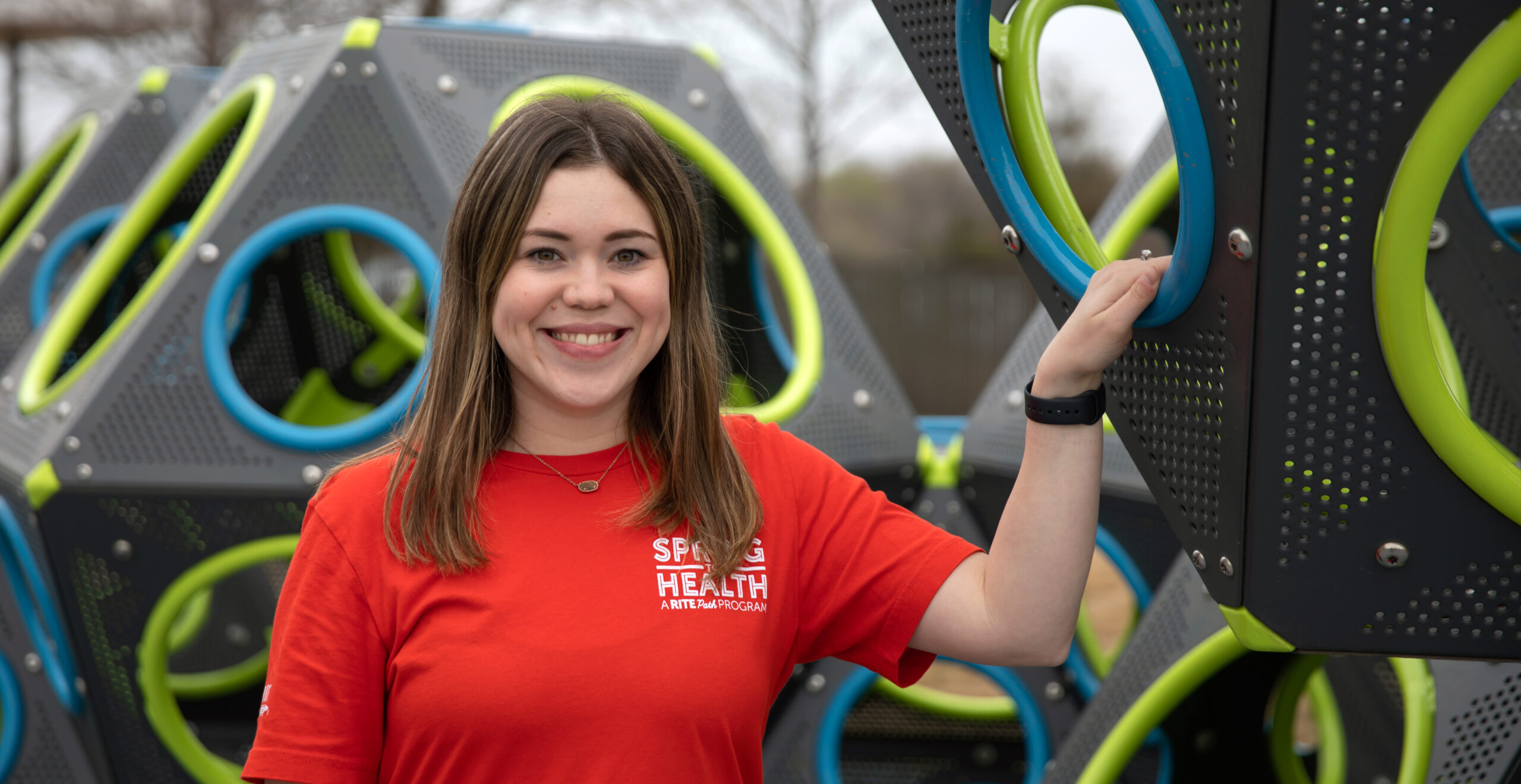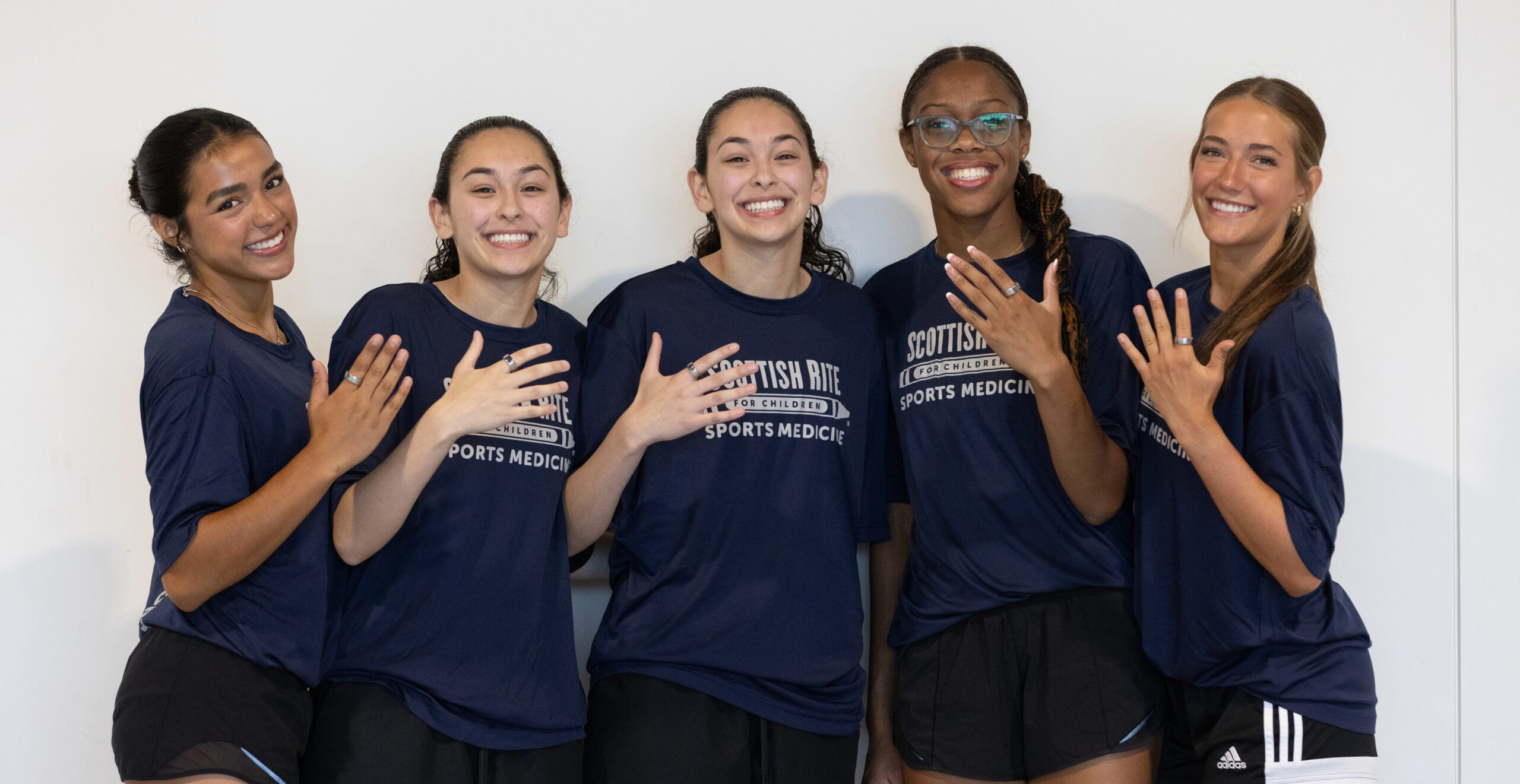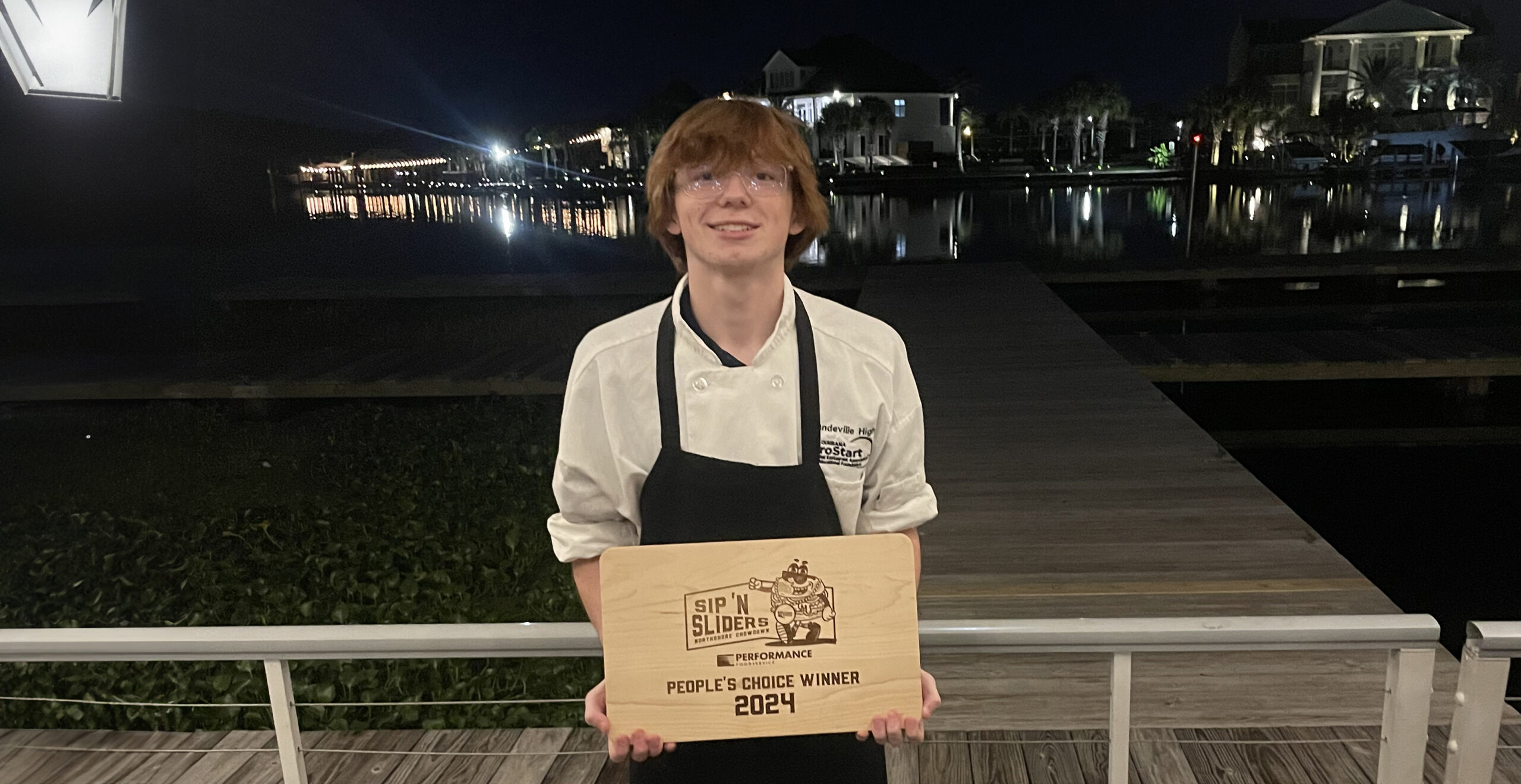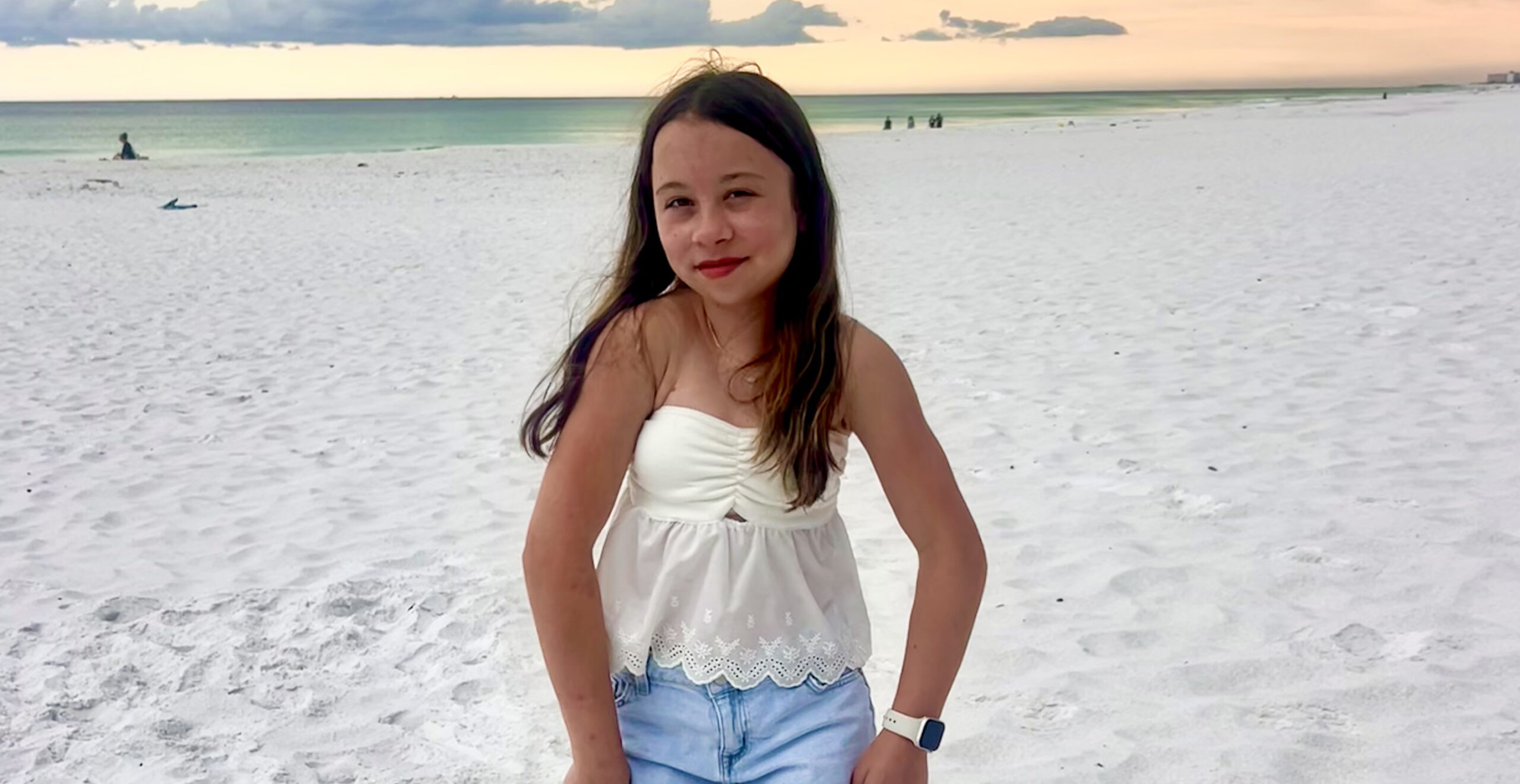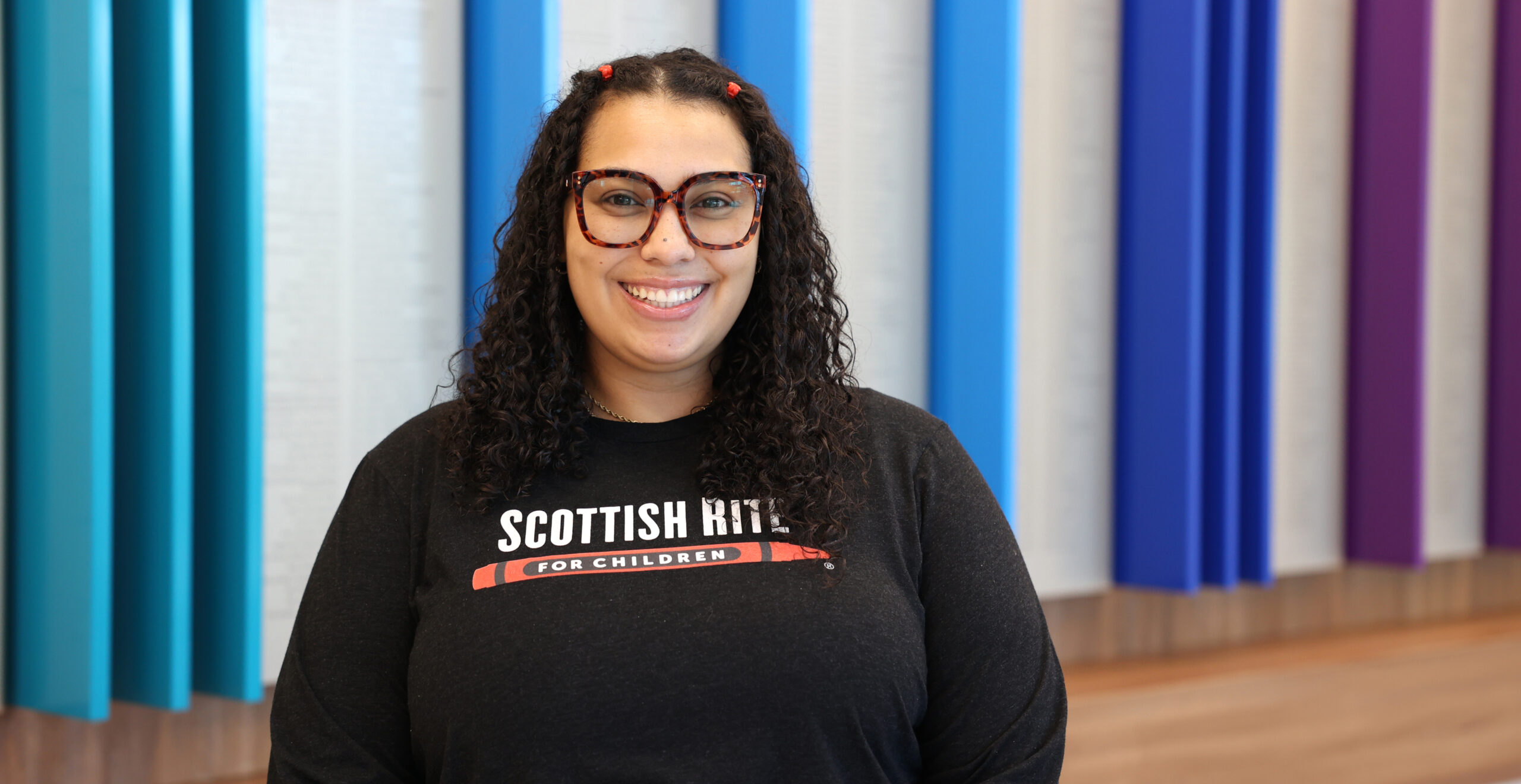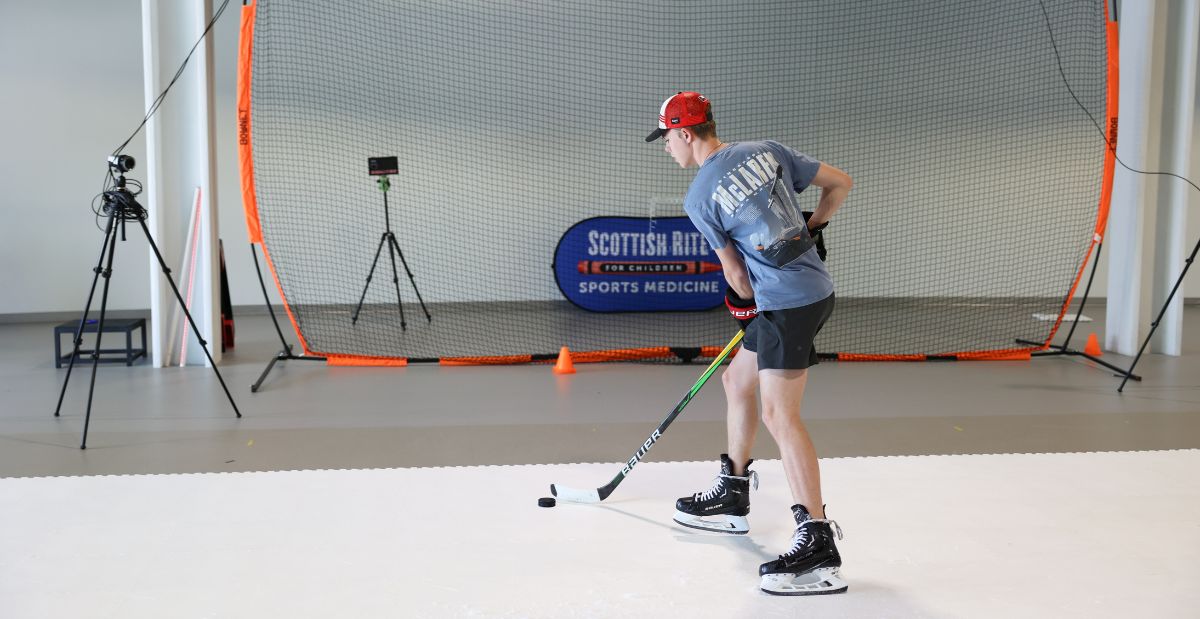What is your job title/your role at Scottish Rite for Children?
I am a pediatric physical medicine and rehabilitation physician. I work with children who have mobility impairments. Because cerebral palsy is the leading cause of physical disability in in the United States, this population makes up the majority of my practice. My goal as a pediatric physiatrist is to facilitate mobility, function, activities and care for children with physical disabilities using nonoperative means.
What do you do on a daily basis or what sort of duties do you have at work?
I work with an awesome team of physician assistants, nurse practitioners, nurses, medical assistants, orthotists and therapists to assess function and rehabilitation needs of children with cerebral palsy. In my clinics, I help identify and set therapy goals for children. I also treat conditions that may interfere with mobility and function, such as tone. I use a variety of tools, including therapy, orthoses, oral medications, botulinum toxin injections, intrathecal medications and casting to help children be comfortable, active and participate in activities they enjoy. In addition, I also assess and diagnose causes of motor control disorders in children when they come into clinic without a diagnosis.
What was your first job? What path did you take to get here or what led you to Scottish Rite? How long have you worked here?
My first job was doing administrative work in an environmental engineering firm in my hometown of El Paso the summer after my first semester in college. I was inspired by my father — an engineer, and my mother — a nurse, to study biomedical engineering in college. I worked for GE Healthcare after I graduated. My job at GE Healthcare required spending time with cardiologists. This experience helped me see how doctors solve problems like engineers, but they also get to form strong relationships with people of all backgrounds. This led me to apply to medical school. I then chose physical medicine and rehabilitation because it allowed me to follow patients with complex medical conditions longitudinally and help them achieve goals that sometimes seem insurmountable.
What do you enjoy most about Scottish Rite?
My favorite thing about working at Scottish Rite is that we are guided by the CARE RITE values. Specifically, being child-focused allows me to build strong rapport and have fun with my patients in clinic. I always leave clinic with a huge smile on my face and am excited to tell my husband how much fun I had at work. In addition, by putting children and family first, the CARE RITE values promote excellent teamwork and multidisciplinary care of children with complex needs. This means that my colleagues and I are always on the same page — we will do what is best for the patient and families always.
Tell us something about your job that others might not already know.
I completed six years of residency and fellowship training in order to become a pediatric physiatrist. I did one year of internal medicine at Parkland/UT Southwestern. I then did three years of physical medicine and rehabilitation at Columbia/Cornell in New York. Finally, I completed two years of pediatric rehabilitation medicine at Baylor College of Medicine/Texas Children’s in Houston. All this training is needed to help physiatrist learn function from a multisystem perspective. In training I learned about diagnosis and management of bowel and bladder dysfunction due to spinal cord injuries; neuropathies and muscular dysfunction from cancer and cancer treatments; cognitive impairments from traumatic brain injuries; among many other conditions that affect function. The year I spent doing internal medicine at Parkland Memorial Hospital was very challenging, but it gave me a very good perspective on the medical and social challenges some of our patients will face once they age out of the pediatric medical system.
What is your favorite game or sport to watch and play?
Volleyball. I played middle blocker in high school in El Paso. I love volleyball because it requires a lot of practice to develop skills, but it also requires very good communication with your teammates. For example, without letting your backrow teammates know that you are bumping the ball, or letting the setter know that you are ready to strike as a middle hitter, that ball will drop on the floor. In fact, volleyball reminds me of health care — it can be very intricate, requires a lot of coordination and requires players to be excellent at their individual position. Without good teamwork, communication and flexibility, though, a play can easily fall apart. Again, this is why I love working at Scottish Rite. If we were a volleyball team, I have no doubt we would be national champions!
How has your heritage shaped the person you are today?
My family is from Mexico. My parents were born and grew up there. Because of many psychosocial challenges my grandparents faced in Mexico, none of them were able to complete elementary school. My maternal grandfather was a silver miner, and my paternal grandfather was a carpenter. Despite their limited education, my grandparents instilled the values of hard work and education on my parents. Through these values, my mother became a nurse and my father an industrial engineer. Seeing my parents work hard to meet their professional goals when we moved to the United States has been an enormous inspiration for my siblings and me. We have always been so proud of my parents and our heritage for this reason.
Does your family have any traditions that are especially important to you?
My birthday is on Christmas Eve. In Mexico, a lot of families celebrate Christmas on December 24th. Getting together with extended family at my grandmother’s home in Juarez, Mexico, eating tamales and breaking a birthday piñata are some of the most cherished memories I have from childhood. To this day, we still make tamales and break a piñata for Christmas.
What is your favorite meal or recipe?
Chile Rellenos. My grandmother used to make them for us when we would visit her on the weekends in Mexico. And now that we are older, this is one of the meals my mother makes for my husband and me when we visit her in Houston. Chile Rellenos was also the first meal I cooked for my husband when we were dating, and when I started working at Scottish Rite, my mother came to my house to help me cook a big batch for a work celebration. They are very time consuming to make, but they are also delicious in a corn tortilla with beans and salt!
What is your favorite travel destination?
Big Bend National Park. It sits on the Chihuahuan Desert and is on the border with Mexico, similar to El Paso, where I grew up. It is very remote and isolated, so it is easier to find solitude and time to reflect while hiking. Surprisingly, it has a significant amount of bird, insect and plant diversity, as it is the only national park that houses a whole mountain range — the Chisos, a desert and a river. The flora and fauna have to be tough and resilient, but still thrive, and it houses the Mexican Black Bear, which was extirpated, but made a comeback into Big Bend National Park in the 1980s.
What does Hispanic Heritage Month mean to you?
It means connection. Not only to my parents, grandparents and traditions but also to my patients. I chose to practice in Dallas partly because it has a substantial Hispanic population — 41.5% per the 2021 census. Being able to celebrate National Hispanic Heritage Month gives me a reason to celebrate together with a large portion of my patients.
How do you identify within the Hispanic community?
I identify as Mexican-American. While the people with Hispanic and Latino heritage can be very diverse in geography, culture and colloquialisms, I love connecting through our shared values. For example, I love bonding over music with one of our Neurology/Rehab nurses whose family is from El Salvador but grew up listening to the same music that our parents listened to. In New York, being able to communicate with a large population of Dominican patients was also very gratifying. One of my favorite memories in residency was when an Ecuadorian hospital worker brought me Mexican tamales from New Jersey because he knew I was missing my family during Christmas.
What brings you joy about your heritage and culture?
Being able to bond with patients with similar heritage. While doing a botulinum toxin injection, one of my patients was listening to Vicente Fernandez, a Mexican singer and songwriter who is considered one of the greatest by many. After completing the injection, I knew my patient had tolerated it well when he belted one of Vicente’s most famous songs at the top of his lungs. At that point, I had no other choice but to join him in singing!
What does community mean to you?
Community means shared values and beliefs. This in turn helps me find connection and rapport with my patients. By being part of the same community, I hope to inspire my young Hispanic patients to aspire to become doctors too.
What do you enjoy most about your role at Scottish Rite for Children?
Being able to work with a diverse group of people in skill and background with similar goals and values. Every person I have worked with, and those who have supported me at Scottish Rite, have not only shown kindness and excellence but also a strong commitment to deliver the best experience and care for the diverse group of patients we see.
What’s one fun fact about yourself?
I was named after my older sister’s imaginary friend! She had a slew of imaginary friends, and my parents like the name Fabiola.


